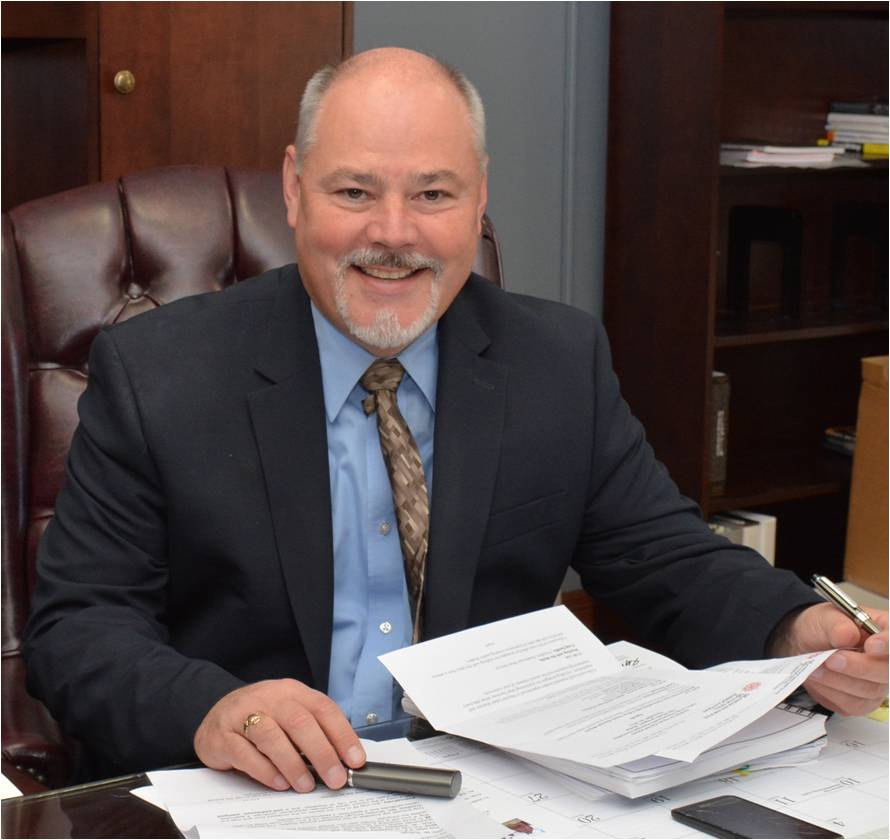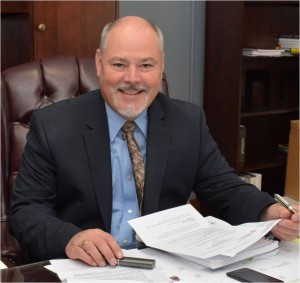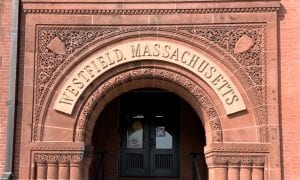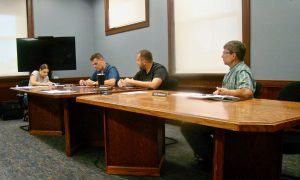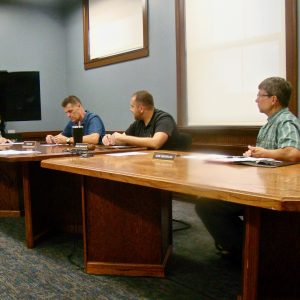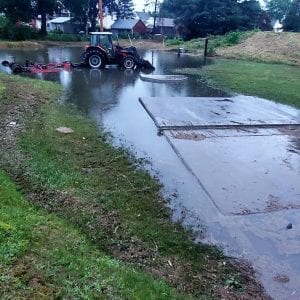WESTFIELD – Mayor Brian Sullivan and Department of Public Works Director Dave Billips issued the following statement to address Westfield’s water concerns.
Unfortunately, there is a great deal of confusion regarding the water situation currently facing the City of Westfield and the efforts to address it. The goal of this article is to clear up some of the misconception surrounding this polarizing issue. What will be addressed here is the mechanical and process to achieve solutions to a problem the City did not create, and how this administration is going to remain focused returning clean drinking water to Northside of town.
Most are aware of the history but a brief synopsis is offered to clear up some confusion. In 2013, the Environmental Protection Agency (EPA) identified contaminants of concern, that being the family of perfluorinated carbons. The EPA issued a health advisory of 600 parts per trillion (ppt) for two of these compounds. All Westfield drinking water sources were under the advisory levels. In late 2015, the Water Division of the Department of Public Works (DPW) became aware that a new health advisory was imminent. Out of an abundance of caution, and before said advisory was issued, the department ceased to use of Wells 7 & 8. Test results for these sources were substantially higher than levels in Wells 1 & 2. The DPW proactively began addressing the issue by investigating all alternatives, including carbon filtration on impacted wells.
In May of 2016, EPA did indeed update the advisory with new levels of 70 ppt. In February 2018, the department was notified the advisory was changing again to include five long chain compounds as opposed to the two originally identified. Again, the department reacted immediately and removed well 2 from service out of caution. This left only Well 1 in operation with no redundancy and that is where we remain presently.
It is important to note that no source testing above the advisory level was ever introduced into the system. Residents were notified by the City in partnership with the Massachusetts Department of Environmental Protection (DEP) as to the status of the drinking water supply. The DEP is a regulatory agency that oversees drinking water systems across Massachusetts. All test results are reported to them and they decide if a public notice should be published and the language in such report is approved by them. At no time was any information withheld from the people of Westfield.
Currently, the City has four sources of water on the affected Northside, Wells 1, 2, 7, and 8. The output of these Wells is as follows;
Well #1- 2.00 million gallons per day (mgd)
Well #2- 2.00 mgd
Well #7- 2.39 mgd
Well #8- 1.58 mgd
There have been several alternatives to those in the bond proposal offered by individuals outside the department. Many have arisen in the past and the purpose of this correspondence is not to engage in a back and forth but to inform residents of the facts surrounding this issue. We have been answering these questions and explaining why the alternatives that have been identified and investigated previously are not good solutions.
Montgomery Reservoir– this source was taken off line in 1971 for odor and color issues. The department commissioned a study in 2002 to determine the feasibility and cost to reestablish this as an additional source. Water quality sampling and analysis was conducted and organic, inorganic and microbiological parameters were evaluated. Besides meeting regulatory filtration and disinfection standards for treating surface water, treatment would include; reducing levels of organic carbon, meeting standards for removal and/or inactivation of Giardia and viruses, reducing levels of iron and manganese and corrosion control.
To provide 1.4 mgd capacity would require rehabilitating the downstream Tekoa Dam, constructing a water treatment plant and installing new pipelines. The estimated capital cost (in 2002 dollars) was $7.9 million and that didn’t include the 150 year old pipe that ran to the City. Considering the project would not supply as much water as any of the existing sources on the Northside, the option was dismissed.
Springfield Interconnect– Westfield already has emergency interconnects with Springfield on the Southside of the City. These interconnects are activated when there is a shortage of water on that side of the City but with four functioning Wells and the Granville Reservoir they are only used in an emergency.
The bond proposal includes $1.3 million for an additional interconnect to maintain hydraulics in the Northwest water tank and would allow discontinuance of Wells 5 & 6. These two shallow, low yield Wells are problematic at best. It is important to note that while the Westfield water system is blended and some water from the Southside reaches the Northside it is not enough to sustain the system during even moderate demand conditions.
Holyoke Interconnect– These are several issues with connecting to Holyoke, primarily the water is untreated. This would mean construction of a new water treatment plant. The pipe that would supply this plant from Holyoke is not functional and would need extensive repair or replacement. If Westfield was to investigate purchasing treated water form Holyoke there is no functioning pipe in existence from their treatment plant at the top of the mountain to supply a newly constructed Westfield treatment plant. Holyoke also adds fluoride to their water, which further complicates the matter.
While it is true Holyoke has an abundance of water, so does Westfield. Why would we invest millions of dollars in capital to buy water form another community when that money could be spent on our own water sources?
New confirmation of a well on the Northside – It has been erroneously stated that a new well could be constructed on the Northside of the City away from the source of contamination in three months. More reasonable estimates are three to five years as confirmed by DEP. Once again the City has investigated establishing a redundant source on the Northside several years ago and the results indicated the only viable location would yield roughly 0.5 mgd. It is also unlikely in today’s climate that the City would be allowed or want to construct a new well without adding a treatment plant, which means spending millions more for that project and still not eliminating the present contamination.
Temporary Treatment of Wells 1 & 2 – The City is pursuing temporary treatment on City owned land at Well 2. There has been a suggestion that temporary treatment should be explored at Well 1. Again, this has been looked at extensively within the department and discussed with DEP. There is insufficient property at the Well 1 site to place a vessel.
It has also been reported that a resident offered a portion of their property for construction of this alternative. By regulation, you cannot place public drinking water supply equipment on private property; the land has to be owned by the City. If property was gifted to the City there would still be permitting and legal issues that are not quickly resolved. Once again a very expensive process that still does not clean the current contamination problem.
Of greater concern is contact time from treatment to the first customer. A certain amount of time is required for water to travel in a pipe before it meets regulatory requirements. There doesn’t appear to be a location in the vicinity of Well 1 (on City owned or private property) where this could be achieved. The simplest way to understand this is we don’t have a well problem, we have a contaminated water problem. We need to fix the problem.
It is important to note that temporary treatment is in fact that, temporary. There is no redundancy built in and the systems are not permitted for long time usage. Some of the cost incurred is not recoverable and the longer you run these systems the more those costs mount. Temporary treatment also runs at significantly reduced capacity and may require an all-out water ban to ensure sufficient water for basic needs.
Temporary Treatment of Wells 7 & 8 – It was questioned why temporary treatment was not investigated at Wells 7 & 8 when the problem first surfaced. In fact, it has been investigated extensively. Analysis revealed that it cost more to rent temporary vessels than to purchase them. There were also spatial constraints at the Well 7 & 8 site. It is not possible to install temporary treatment and construct a permanent treatment plant simultaneously. Additionally, Wells 1 & 2 were well below the advisory with no indication there would be change forthcoming. Given the circumstances permanent treatment was aggressively pursued at Wells 7 & 8.
We know there are other alternative items being discussed at this time, none of which ultimately make sense or are an affordable, reimbursable solution. Approving only some of the project and cutting the bond in half is only leaving the contamination in aquifer for someone else to manage. Also, the latest new procedure is a very expensive pump and dump which makes no sense in restoring clean water for our residential faucets
The bottom line is we find ourselves in a vulnerable position. The health and safety of Westfield’s residents are at risk and the best, quickest and most economical solution are those put forward by the Water Division personnel of the Westfield DPW. These people have years of experience and education dealing with matters of engineering, water chemistry, treatment and distribution that always have and will continue to act in the best interest of the residents of Westfield.
The City has filed a number of legal documents and a lawsuit in order to assess our losses to the responsible parties. This is a long and complicated process. To date we have filed a lawsuit in the United States District Court against 3M and other corporations who either manufactured or distributed the chemicals causing the water contamination. We have claimed all legally available theories. The City has also filed a Notice of Tort Claim against the United States Airforce, a prerequisite to filing a lawsuit. This notice is required so that the parties may engage in negotiation prior to filing suit.
The City has engaged two nationally known environmental law firms to assist in this process. Both firms have handled similar matter for governmental entities and are exploring all potential courses to recovery. The City continues to outreach with legislators, both State and Federal along with all agencies which may have access to funding.
In conclusion, and despite imputations to the contrary, we have no hidden agenda(s) or personal gain associated with this bond request. There is one goal and one goal only, to bring clean drinking water to the residents of the City of Westfield. Please ask your City Councilors for the support of this plan.
From the desk of Mayor Brian P. Sullivan and Director of Department of Public Works, David Billips

